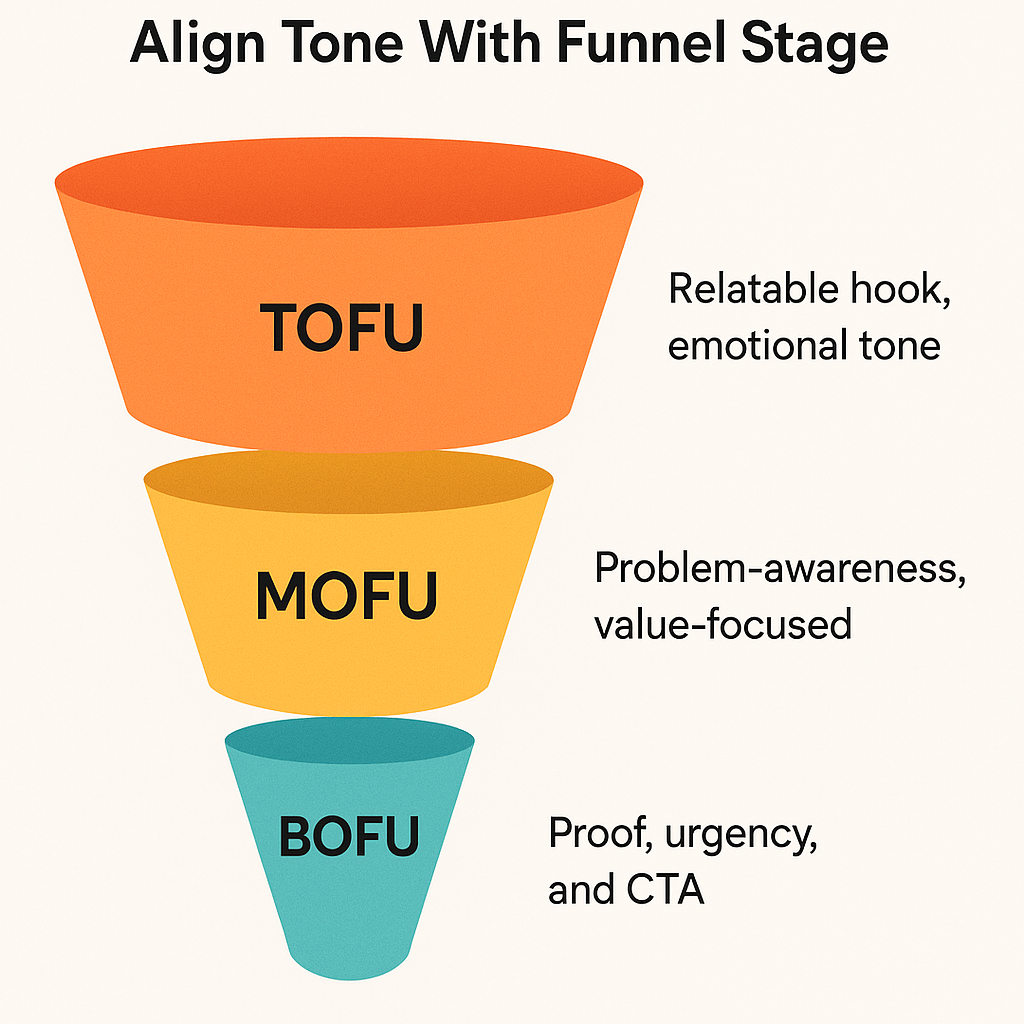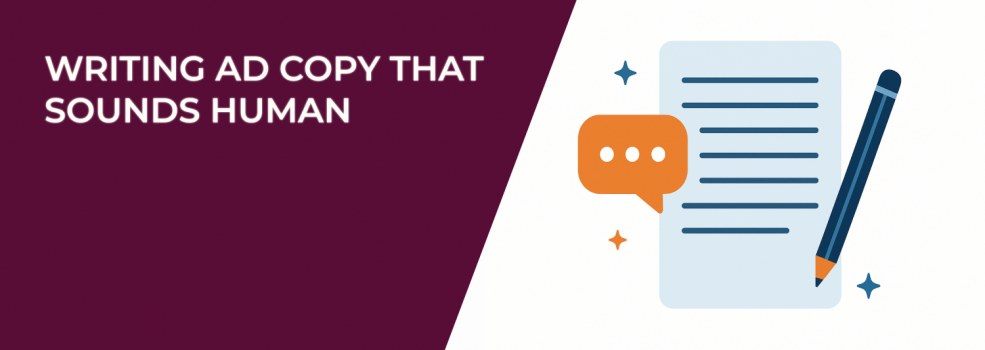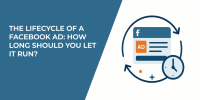Most Facebook and Instagram users scroll past ads in seconds. They’re not ignoring you — they’re ignoring anything that looks like a generic template. When ad copy sounds robotic, vague, or overly polished, it triggers an immediate mental skip.
But human-sounding ad copy? That stops the scroll. It reads like a conversation. It gets the "yeah, I’ve felt that" reaction. And that emotional pause is exactly what you need to earn attention in a crowded feed.
Your copy is your first impression. Make it feel like a person wrote it.
1. Cut the Buzzwords and Over-Explainers
Overused buzzwords can make your ad sound like a pitch deck instead of a message worth engaging with. When users spot phrases like "world-class platform" or "innovative solution," they tune out. Instead, aim for clarity, not cleverness.

Let’s break down why buzzword-heavy writing hurts performance:
-
Buzzwords mean nothing without context: Terms like "seamless" or "intuitive" are only helpful if you also show what makes the experience easier or smoother.
-
Long intros waste attention: You only have a few words to stop the scroll. Don’t waste them on vague setup lines.
-
Over-formality kills curiosity: You’re not submitting a corporate memo — you’re trying to spark interest. Write accordingly.
If you want people to take you seriously, drop the filler and start showing value in plain language.
Try this:
-
Before: "Our AI-powered platform helps businesses streamline operations."
-
After: "Overwhelmed by clunky tools? This one actually makes sense."
Want more examples? Check out Crafting Facebook Ads Copy That Converts.
2. Start With Emotion, Then Add the Offer
Emotional connection is the gateway to conversion. When people see your ad, they should feel like you get their situation. That’s why strong ads often lead with a feeling before they mention any product details.
Here are three emotional entry points you can use:
-
Frustration: "Still refreshing your dashboard to see real results?" This speaks to an ongoing pain point.
-
Hope: "What if your ads actually brought in leads this week?" This opens a door to a better possibility.
-
Relief: "No more explaining your value to cold leads. This does it for you." This frames your offer as a way out of their daily struggle.
Once you've hooked someone emotionally, they’re much more open to hearing about what you sell or how it works. Emotion creates the opening — logic closes the sale.
3. Use Real Words, Real Sentences
Natural language builds trust. People can spot stiff copy from a mile away. If your ad reads like it came from a brand guidelines PDF, rewrite it.
Here are simple ways to sound more human:
-
Use contractions: Say "you’re," "they’re," and "it’s" instead of their formal versions. It mirrors how people talk.
-
Allow fragments: Short bursts like "Not working?" or "Worth a shot." add rhythm and realism.
-
Write in an active, direct voice: Start with action verbs and cut unnecessary modifiers. Instead of "You may want to consider," try "Try this."
This approach helps your copy flow more naturally and keeps readers engaged longer. Don’t overthink your tone — just make sure it sounds like something you’d actually say.
Want inspiration? Swipe ideas from your audience's own words. Dig into reviews, comments, or even Facebook Groups. That’s where your tone lives.
4. Add Specificity and Visual Clarity
Vagueness kills credibility. Specific details, even small ones, make your copy more believable and easier to picture. Adding clarity helps build trust — and trust drives clicks.
Instead of saying:
-
"Thousands of customers."
Say something like:
-
"3,284 businesses used this tool last month."
See the difference? One feels real. The other feels like marketing fluff.
Visual clarity also matters. Format your ad text so it’s easy to skim:
-
Break long sentences into two lines where possible.
-
Use line breaks and white space to guide the eye.
-
Avoid chunky blocks of text, especially in mobile-first placements.
Formatting your copy with scan-ability in mind improves performance, especially on mobile, where space is limited. Great copy can still fail if no one sticks around to read it.
If your ad is hard to read, it’s easy to skip. Want to keep performance strong across campaigns? Learn more from How to Finish the Facebook Learning Phase Quickly.
5. Ask Better Questions
Questions are powerful. They can hook a scroller, create a moment of self-reflection, or highlight a problem. But not every question adds value. In fact, most generic questions fall flat.
Bad questions include:
-
"Do you want more sales?"
-
"Are you ready to grow your business?"
These are vague and overused. Instead, try questions that make the reader pause and think.
Stronger examples include:
-
"Why are your ads still stuck in the learning phase?"
-
"What if your next campaign didn’t flop?"
-
"Are you sure your copy isn't repelling the right leads?"
The right question can shift the conversation. It nudges the reader to think, "Hmm, maybe I do need to take a closer look."
For more copy troubleshooting, check out Why Your Ad Copy Might Be Hurting Lead Quality (And How to Fix It).
6. Align Tone With Funnel Stage
Too many ads miss the mark because they don’t match the mindset of the viewer. A person seeing your brand for the first time isn’t ready for the same pitch as someone who’s visited your site three times.

Here’s how to adjust your tone depending on funnel stage:
-
Top of funnel (cold): Use quick, curiosity-led hooks. Focus on problems or relatable moments. Example: "Seen 10 different CRMs this week? Here’s the one your team won't hate."
-
Middle of funnel (warm): Bring in credibility and concrete value. Address objections. Example: "Still relying on spreadsheets? Here's how automation saves you 6+ hours a week."
-
Bottom of funnel (hot): Get direct. Use urgency, proof, and clear CTAs. Example: "Ready to switch? Thousands already have. Book your free audit."
Adjusting your tone and structure for different stages of awareness isn’t just smart — it’s essential if you want to avoid wasted clicks.
Want a deeper framework? Check out Facebook Ads Funnel Strategy: From Audience Identification to Conversion.
7. Don't Forget the CTA (But Make It Human)
Calls to action matter. But they shouldn’t sound like commands. You want your CTA to feel like the next natural step — not a demand.
Here are a few better-performing CTA styles:
-
"Take the tour."
-
"Try it risk-free."
-
"Get the cheat sheet."
-
"Fix your targeting."
The point is not to be clever, but to be clear and user-friendly. Your CTA should feel helpful, not pushy — like you’re guiding someone instead of selling to them.
Bonus: Test Voice + Style, Not Just Copy
You’re probably already testing headlines and CTAs. But have you tested tone? The way your copy sounds can shift results dramatically.
Try these two variations:
-
Casual and friendly: "Hey, this helped me save 4 hours a week. Might help you too."
-
Bold and direct: "You’re wasting time. This tool stops that."
Tone testing can reveal audience preferences you didn’t expect. It also helps you dial in your brand voice across channels.
Final Thoughts
Need a checklist for quick edits? Use this as your go-to reference:
-
Keep it conversational, not corporate: Write like you're talking to someone at a coffee shop.
-
Start with emotion: Lead with a relatable feeling, then present the offer.
-
Use contractions, fragments, and natural flow: It’s how real people talk.
-
Be specific: Include numbers, names, or concrete examples.
-
Ask real questions: Make the reader think, not roll their eyes.
-
Match the message to funnel stage: Tailor your tone based on where the user is.
-
End with a CTA that feels like a next step: Not a pushy order.
These rules aren’t just guidelines — they’re the difference between getting ignored and getting clicks. Bookmark them, test them, and keep tweaking.

